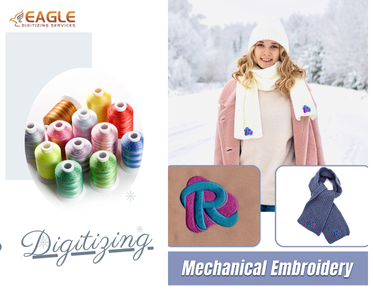Transform Your Design: How Can I Convert a Logo into a Vector
In the digital
age, logos serve as the visual cornerstone of a brand, encapsulating its
identity in a compact, recognizable form. Yet, many logos exist in raster
formats, which can pose challenges when it comes to resizing and versatility. Converting a logo into a vector format unlocks a
myriad of possibilities, ensuring that your design remains crisp, clear, and
adaptable. This guide will walk you through the importance of vector graphics,
the tools needed for conversion, and practical steps to achieve a stunning
vector representation of your logo.
Why Convert Your Logo to a Vector Format?
Scalability:
Maintaining Quality at Any Size
One of the most
compelling reasons to convert your logo to a vector format is scalability.
Vectors can be resized to any dimension—whether you’re scaling down for a
business card or blowing up for a billboard—without the pixelation that often
plagues raster images. This ability to maintain crispness and detail at any
scale not only enhances your brand’s professionalism but also ensures that your
logo is visually appealing in every context.
Editing
Flexibility: Making Changes Easily
Another advantage
of vector graphics is the editing flexibility they provide. With vectors,
individual elements of your logo can be easily manipulated, resized, or
replaced without compromising the overall design. This is particularly useful
for businesses that may undergo rebranding or wish to tweak their designs for
specific campaigns. The capacity to modify logos quickly and efficiently
ensures that your branding can evolve alongside your business.
Compatibility
Across Various Media: Print and Digital
In today’s
multifaceted marketing landscape, logos must function seamlessly across a range
of media. Vector formats are highly versatile and compatible with both print
and digital platforms. From promotional merchandise to website graphics, having
a vector logo guarantees that your brand is consistently represented,
preserving color fidelity and detail across all applications. This consistency
is crucial in building brand recognition and trust among your audience.
Tools You’ll Need for Conversion
Graphic
Design Software: Adobe Illustrator, CorelDRAW, and More
To convert your
logo into a vector format, graphic design software is essential. Adobe
Illustrator stands out as the industry standard for vector graphics, offering a
robust suite of tools designed for precision and creativity. CorelDRAW is
another excellent option, known for its user-friendly interface and extensive
functionality. These programs allow for intricate editing and detailed design
work, making them ideal for creating high-quality vector logos.
Free
Online Converters: Pros and Cons
For those looking
for budget-friendly solutions, free online converters can provide a quick way
to transform raster images into vector formats. However, while these tools can
be convenient, they often lack the precision and customization options
available in dedicated software. The results can vary significantly, so it’s
crucial to review the output carefully. Online converters are best for simple
designs or as a starting point, but they may not meet the standards required
for professional branding.
Mobile
Apps for Quick Conversions on the Go
In an era
dominated by mobile technology, various apps cater to quick logo conversions on
the go. While not as powerful as desktop software, applications like Adobe
Capture and Vector Q offer handy tools for transforming images into vectors.
These mobile solutions are perfect for designers who need to make quick edits
or create vector logos from existing images while away from their desktops.
Step-by-Step Guide to Converting Your Logo
Starting
with a High-Quality Image: The Importance of Resolution
Before diving
into the conversion process, it’s vital to begin with a high-quality raster
image. The resolution should ideally be at least 300 DPI (dots per inch) to
ensure that the details are preserved during conversion. A high-quality starting
point minimizes artifacts and blurriness, leading to a cleaner final product.
If you only have low-resolution images, consider recreating the logo or
obtaining a better-quality file before proceeding.
Using
Adobe Illustrator: A Detailed Walkthrough
- Open Your Image: Launch
Adobe Illustrator and import your high-quality raster image by navigating
to File > Open.
- Select the Image: Click on
the image to select it. You’ll see the Image Trace button appear in the
toolbar.
- Apply Image Trace: Click on
the Image Trace option to open
the panel. Here, you can choose preset options or customize settings based
on your needs. For logos, the “Black and White Logo” preset is often a
good start.
- Expand the Trace: Once
you’re satisfied with the trace, click the Expand button in the toolbar to convert the traced image into
a vector object.
- Edit Your Vector: Use the
Direct Selection Tool to adjust paths and refine your logo. Here, you can
edit colors, shapes, and sizes to achieve the desired look.
- Save Your Work: Finally,
save your logo in a vector format by navigating to File > Save As and selecting your preferred vector file
type.
Using
CorelDRAW: A Comprehensive Guide
- Open Your Image: Launch
CorelDRAW and import your logo by going to File > Import.
- Select the Image: Click on
the imported image to highlight it.
- Trace Bitmap: Navigate
to Bitmaps > Quick Trace or
use Outline Trace for more
detailed options. Choose the trace setting that best suits your logo
style.
- Refine the Tracing: Once the
tracing is complete, you can fine-tune the vector paths and colors.
CorelDRAW allows you to break apart and edit elements with ease.
- Save Your Vector: Save your
file in the desired vector format via File
> Save As, ensuring you select formats like AI or EPS for
professional use.
Exploring
Free Software Options: Inkscape and Others
For those seeking
a no-cost alternative, Inkscape is an excellent option for vector conversions.
- Import Your Image: Open
Inkscape and go to File > Import
to load your raster logo.
- Trace Bitmap: Select
your image, then navigate to Path
> Trace Bitmap. This feature offers various options to adjust the
trace settings for optimal results.
- Edit and Adjust: After
tracing, you can modify paths, adjust colors, and refine your design.
Inkscape provides powerful tools for editing vectors, similar to paid
software.
- Export Your Vector: Save your
logo by going to File > Save As
and selecting a vector format suitable for your needs.
Tracing Your Logo Manually vs. Automatically
Understanding
the Auto-Trace Feature in Illustrator
While the
auto-trace feature in Illustrator can be a time-saver, it’s essential to
understand its limitations. This function uses algorithms to analyze images and
convert them into vectors, which may result in inaccuracies, especially with
complex designs.
Manual
Tracing Techniques for Precision and Control
For those seeking
ultimate precision, manual tracing is the way to go. By using the Pen Tool, you
can draw paths that closely follow the contours of your logo. This technique
allows for greater control over shapes and lines, ensuring that your final
vector accurately reflects the original design. It may be more time-consuming,
but the results are often worth the effort, especially for intricate logos.
When
to Choose Manual Tracing Over Automatic Options
Choosing manual
tracing is advisable when dealing with complex logos featuring gradients,
intricate details, or multiple colors. While automatic tracing is efficient, it
can struggle with these nuances, leading to incomplete or inaccurate vectors.
In such cases, the painstaking process of manual tracing may yield a superior
result that better represents your brand.
Adjusting Paths and Shapes After Conversion
Editing
Nodes and Anchor Points for Accuracy
Once you have
your logo converted to a vector, fine-tuning is
essential. Use the Direct Selection Tool to adjust nodes and anchor points,
allowing for precise control over the shape and flow of your design. This
meticulous editing ensures that curves and angles match your original vision,
enhancing the overall quality of your vector logo.
Resizing
and Aligning Elements for a Polished Look
Resizing and
aligning elements within your vector logo is crucial for achieving a polished
appearance. Use alignment tools to center elements and maintain consistent
spacing. This attention to detail not only elevates your design but also
reflects professionalism, reinforcing your brand identity.
Color
Adjustments: Ensuring Brand Consistency
Maintaining color
consistency is vital when converting logos. Use the Color Picker tool to adjust
colors to match your brand palette. Consistent colors across different media
ensure that your brand remains recognizable and cohesive, solidifying your
identity in the minds of consumers.
Saving Your Vector Logo in the Right Format
Common
Vector Formats: AI, EPS, SVG, and PDF
When saving your
logo, it’s crucial to choose the appropriate vector
format. Adobe Illustrator (AI) files are excellent for retaining
editable layers, while EPS (Encapsulated PostScript) is widely used for
printing. SVG (Scalable Vector Graphics) is perfect for web use, as it retains
quality at various sizes. PDF (Portable Document Format) is versatile, offering
compatibility across different platforms.
Choosing
the Right Format for Different Uses
Select your logo
format based on its intended application. For print materials, EPS or PDF is
preferable to ensure high-quality output. For online use, SVG is ideal, as it
provides scalability without compromising loading times. Understanding the
nuances of these formats will help you make informed choices for your branding
needs.
Best
Practices for Exporting Your Logo
When exporting
your logo, consider the following best practices: always save a master file in
your design software, create multiple versions for different uses (print, web,
etc.), and ensure that all colors are defined accurately according to your
brand guidelines. Taking these steps will facilitate smooth transitions between
various media and maintain brand integrity.
Testing Your Vector Logo
How
to Check for Scalability and Quality
Once your logo is
saved in vector format, testing its scalability is paramount. Open the file in
various design applications and attempt to resize it significantly. The logo
should maintain its integrity—no pixelation, no loss of detail. This exercise
ensures that your conversion process has been successful.
Using
Different Backgrounds to Test Visibility
To assess the
visibility of your logo, test it against various backgrounds—light, dark,
textured, and colored. This practice will help you identify how your logo
stands out in different contexts. A well-designed logo should remain
identifiable and impactful regardless of the surrounding elements.
Printing
Samples: Ensuring Color Accuracy and Quality
Before rolling
out your new vector logo, consider printing samples to verify color accuracy
and quality. Different printers and paper types can affect how colors appear,
so it’s wise to check physical copies to ensure your logo looks as intended.
This final step is crucial in safeguarding your brand’s visual integrity.
As you embark on this conversion journey, don’t hesitate to experiment with your logo design. Each iteration is a chance to refine your brand identity and enhance its impact. Remember, the process of converting your logointo a vector format is not just a technical task; it’s an opportunity to strengthen your brand’s presence and appeal in an ever-competitive marketplace. Embrace the journey, and let your logo shine in its new vector form!


